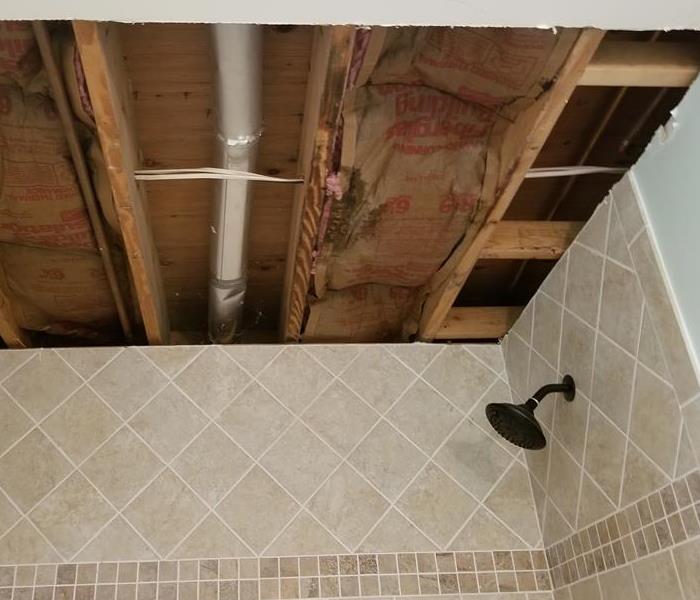Detecting Shower Leaks: Signs to Watch Out For
7/27/2023 (Permalink)
Shower leaks can be sneaky and often go unnoticed until they cause significant damage. Identifying a shower leak early is crucial to prevent water damage, mold growth, and costly repairs. In this blog post, we'll explore some telltale signs that can indicate a shower leak, helping you take prompt action and mitigate potential issues.
Visible Water Damage
Water stains or discoloration on walls, ceilings, or floors near the shower area are clear indicators of a possible leak. Look for peeling paint, bubbling wallpaper, or warped baseboards. These signs suggest that water is seeping into areas where it shouldn't be.
If you hear constant dripping or running water sounds even when the shower is turned off, it's a strong indication of a leak. Pay attention to any unusual noises coming from the shower or adjacent walls, as they could be a result of water escaping through gaps or cracks.
Mold or Mildew Growth
Excessive moisture from a shower leak can create an ideal environment for mold and mildew to thrive. Keep an eye out for black or greenish patches, musty odors, or a dank smell in the bathroom. Check corners, grout lines, and any porous surfaces for signs of mold or mildew growth.
A shower leak can cause damage to the flooring materials, especially if they are porous or not properly sealed. Look for tiles that feel soft, discolored, or loose near the shower area. Warped or buckled floorboards or laminate flooring can also indicate water damage.
Decreased Water Pressure
If you notice a sudden decrease in water pressure when using the shower, it could be due to a leak in the plumbing system. Leaks can disrupt the water flow and affect the pressure coming out of the shower head. Monitor any significant changes in water pressure and investigate the cause.
Keep an eye on your water bills. A hidden shower leak can lead to a gradual increase in water usage, resulting in higher bills without any apparent explanation. If your water consumption seems unusually high, it's worth investigating the possibility of a leak.
Cracked or Loose Grout and Caulking
Inspect the grout lines and caulking around the shower tiles. Cracked, crumbling, or missing grout can allow water to penetrate the walls or floor. Similarly, deteriorated or loose caulking around the shower fixtures or joints can contribute to water leakage.
If the shower shares a wall with an adjacent room, pay attention to any signs of wetness, discoloration, or softened drywall in that area. Moisture seeping through the wall from a shower leak can affect the integrity of the drywall and lead to further damage.
Persistent Odors
A shower leak can create a damp environment that produces unpleasant odors. If you notice persistent musty or moldy smells in the bathroom, even after thorough cleaning, it could be a sign of hidden water damage caused by a leak.
After taking a shower, observe the area around the shower stall or tub. If you notice water pooling on the floor or standing in areas where it shouldn't be, it indicates a leak. Proper drainage should prevent water from accumulating outside the designated shower area.
Detecting a shower leak early is crucial to prevent extensive water damage and costly repairs. By paying attention to the signs mentioned above, you can identify potential leaks and take prompt action. If you suspect a shower leak, it's advisable to consult a professional plumber or contractor to assess and resolve the issue. Remember, addressing a shower leak promptly not only protects your property but also ensures a healthy and functional bathroom environment.




 24/7 Emergency Service
24/7 Emergency Service
